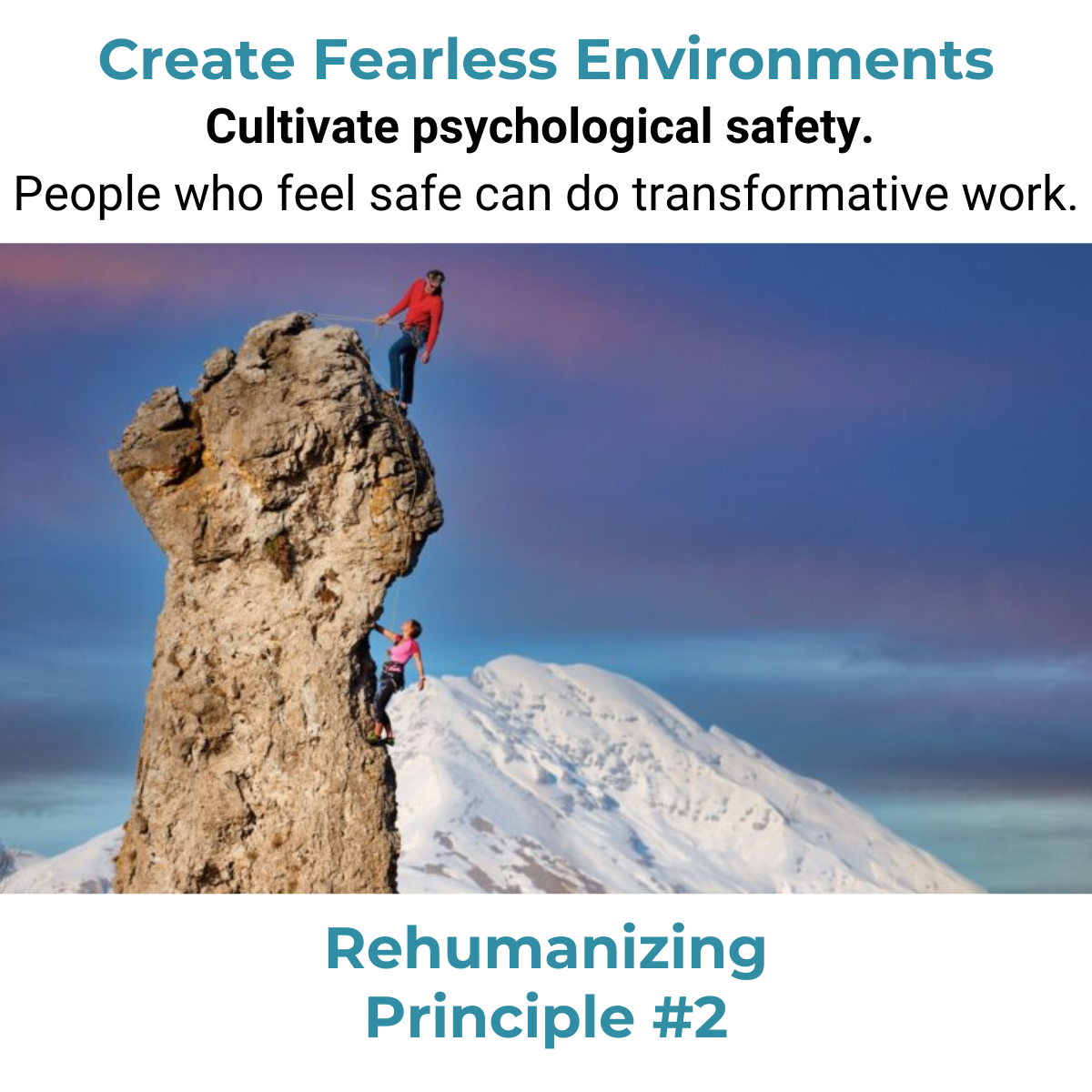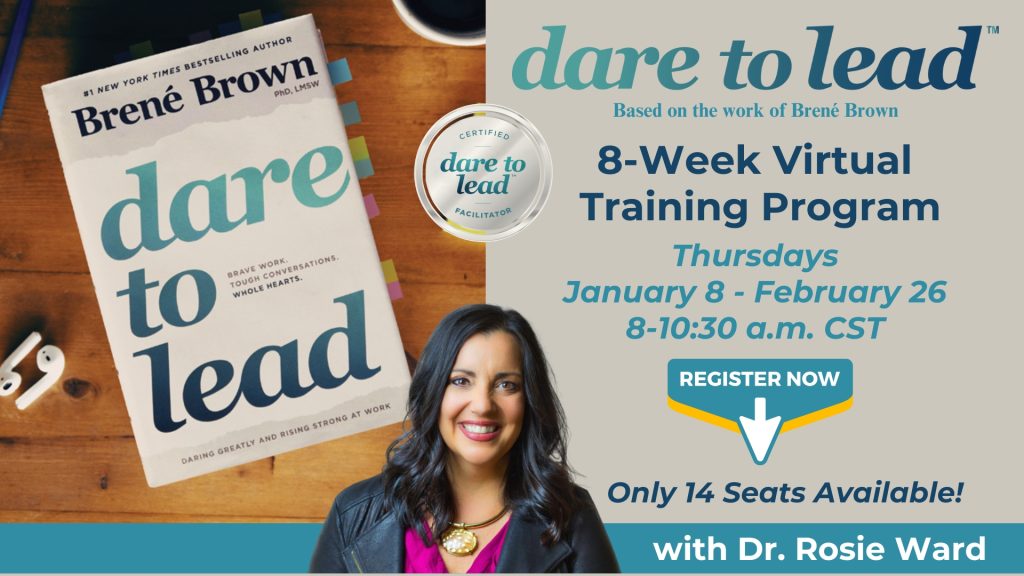Are people in your organization showing up fully – meaning, are they speaking up and contributing their ideas and concerns? Or are they holding back? How would you even know?
Well, if a recent survey by Crucial Learning is any indicator, chances are good that many people are holding back when we need them to show up and be heard. They found that 9 out of 10 people feel emotionally or physically unsafe to speak their mind. Instead of leaning into these tough conversations, people:
- Stay silent but feel inauthentic
- Avoid people
- Fume and stew about things
- Ruminate about what they would have said
- Completely sever relationships
In our work with organizations, we see lots of holding back – from leaders and from teams. People avoid growth feedback and other challenging conversations, don’t want to admit mistakes, have an aversion to asking for or accepting help, and more. And the more disruptive and VUCA (volatile, uncertain, complex and ambiguous) our world gets, the more we see people withholding their contributions; it’s part of our instinctive hardwiring as humans to self-protect.
This is why we need to leverage 5 Rehumanizing Principles to nurture a workplace culture that enables people to show up and contribute their best selves. And, for people to feel safe to speak up, we have to leverage the second Rehumanizing Principle:

DEEP DIVE: CREATE FEARLESS ENVIRONMENTS
Human beings are complex and messy; we frequently get in our own way, preventing us from showing up as our best, authentic selves. Most of us don’t start each day wanting to look stupid, disconnected, or ineffective; we usually want to be seen as smart, capable, and helpful. However, we also don’t like to be vulnerable where we face risk, uncertainty, and emotional exposure. We learn relatively early in life how to manage and avoid interpersonal risks where we might look ignorant, incompetent, or disruptive. It’s part of our self-protective wiring. The problem is that it leads to disconnection and silos, and keeps us (and organizations) from thriving. Add in the disruption of living and working in a VUCA world, and our instinct to
armor up only gets worse.
Given this, it is critical that organizations intentionally create human, psychologically safe environments where people can move beyond self-protection, take risks, and be comfortable expressing and being themselves; we need to create environments where people can share concerns and make mistakes without fear of embarrassment or retribution.

We’ve had some leaders not want to use the term “psychological safety” because they think it’s too much of a buzz word or triggering or something. Call it what you will, but not only are fearless environments more human, they are more responsive and resilient—something we need in a VUCA world.
MAKE IT HAPPEN In Your Organization
The reality is that culture is ultimately built team-by-team, and psychological safety also resides at the team level. So what are the ingredients that make up effective teams? In 2012, Google embarked upon a five-year study—code-named Project Aristotle—to examine hundreds of their teams to find out why some stumbled and others soared. They gathered statisticians, organizational psychologists, sociologists, engineers, and researchers to examine the literature and study behaviors and group norms. They identified five key behaviors:
- Psychological safety: People can take risks on this team without feeling insecure or embarrassed.
- Dependability: People can count on each other to do high-quality work on time.
- Structure and Clarity: The goals, roles, and execution plans on their team are clear.
- Meaning of Work: They are working on something that is personally important for each of them.
- Impact of Work: They fundamentally believe that the work they’re doing matters.
Of these behaviors, psychological safety is the most important dynamic that contributes to team effectiveness; it is both the enabler and gatekeeper of the other four behaviors. When we create fearless environments, people believe that others will not react badly if they make a mistake or ask for help. In fact, psychologically safe teams are not about false harmony or unicorns and rainbows; candor is allowed and expected. People show up, speak up and don’t tap out of tough conversations. It is only within fearless environments that we are able to foster trust and human connection and create a space where people feel supported to learn, grow, and show up as their authentic selves.
Does your organization need to Create Fearless Environments? Here are TWO STEPS you can take to start removing fear and enhance effectiveness for your teams – and ultimately your organization:
- Assess Your Current State of Psychological Safety. As the saying goes, what gets measured gets tended to. Well, just like culture isn’t static, neither is psychological safety. It has to be nurtured and tended to on an ongoing basis. When you know where your strengths and gaps are, it can help you focus your efforts. One way to do that is by leveraging the highly validated Psychological Safety Scan (PSI) to measure your current state and then use it to tailor where you focus your efforts. The PSI measures where teams are in terms of 4 domains of psychological safety:
- Inclusion & Diversity
- Willingness to Help
- Attitude to Risk & Failure
- Open Conversations
- Start Normalizing Failing / Messing Up.
- Start Normalizing Failing / Messing Up. Create deliberate practices where the leaders on your teams share and embrace missteps. Because leaders set the tone, it’s critical they lead this conversation. One practice many of our clients have adopted that we use on our team is F-Up Fridays. Each Friday we have a short team huddle to recap the week. Everyone shares their highlight or peak of the week (the leader shares their highlight last). Then everyone, starting with the leader this time, shares their F-Up of the week; this is the misstep, squiggle or challenge they encountered and the valuable learning it provided. The learning part is the key. Some of our best process improvements have come from F-Up Friday shares. You can also adopt this for 1:1 conversations by always asking about what isn’t going as well and embracing what learning and growth comes from the struggles and mistakes.
CLIENT CASE STUDY: HEALTHCARE
We have found that it’s possible to transform organizations by focusing on one team at a time. Much like the spirit of grassroots organizing, momentum can build and spread throughout the organization like a groundswell; it doesn’t require a formal strategy being pushed down from the top of a hierarchy.
This realization started with one of our clients desperately seeking help for a team that was struggling with communication, in-fighting, and turnover. We facilitated them through our Developing a Leadership Mindset program (DALM) to try to help them. Over the course of six sessions (with practical application exercises in between sessions), people start with self-work and are equipped with a common language and skills to move from self-protection to self-reflection and collaboration. They then learn how to truly listen, how to leverage conflict as a productive conduit for collaboration and change and co-create their own guiding principles for their team culture.
A couple of years ago we administered DALM to an infusion clinic team. They were plagued with back-stabbing, bickering, turnover, communication issues and more. Not surprisingly, their team had one of the lowest scores on the annual employee engagement survey within the entire health system. We created a fearless environment for them to enter into the work DALM invited them to do. And boy did they do the work – and have kept it going through the present day. Slowly, but surely, they started listening to each other, pausing before they acted, assuming positive intent with each other; and they even reported being less stressed as they were able to also use the principles at home. Not only did their psychological safety scores dramatically improve, just recently their team had the second-highest score across the entire organization on the employee engagement survey. In their own words:
“Our group was struggling to function as a healthy team. Admittedly, there was some apprehension about the Developing a Leadership Mindset program. With our facilitator’s assistance, we were able to recognize and break down our own behaviors and barriers, resulting in an ability to appreciate and utilize each other’s talents and strengths. This new way of thinking has ultimately led to tremendous growth, collaboration, and improved communication. We are very proud of our team and we are grateful for the assistance in this lasting change.”
We have put at least 30 other teams in this organization through the DALM program; each team has seen improvements in communication, retention, engagement, and psychological safety. And it’s helped to build a common language throughout the organization.
TAKEAWAYS
Ready to Create Fearless Environments in your organization? It doesn’t have to be overwhelming. Start with one team at a time and build from there. In fact, a great approach is to consider doing a pilot where you assess psychological safety on a team you think is high functioning and performing and another that is struggling. Then work with the leader to intentionally build psychological safety or put them through the DALM program and see what happens.
It can also be helpful to engage outside support to guide the process. The experienced Salveo Partners’ team has your back, whether it’s facilitating the PSI, DALM or developing your leaders to more effectively foster fearless environments on their teams, or something in between. We also can equip you to facilitate DALM in-house via our Developing a Leadership Mindset Facilitator Training Program.
Stay HUMAN. Stay connected. Stay safe. Show Up as a Leader.








1 thought on “The Value of Creating – and Nurturing – Fearless Environments”
Thank you for sharing this insightful article! I found the information really useful and thought-provoking. Your writing style is engaging, and it made the topic much easier to understand. Looking forward to reading more of your posts!